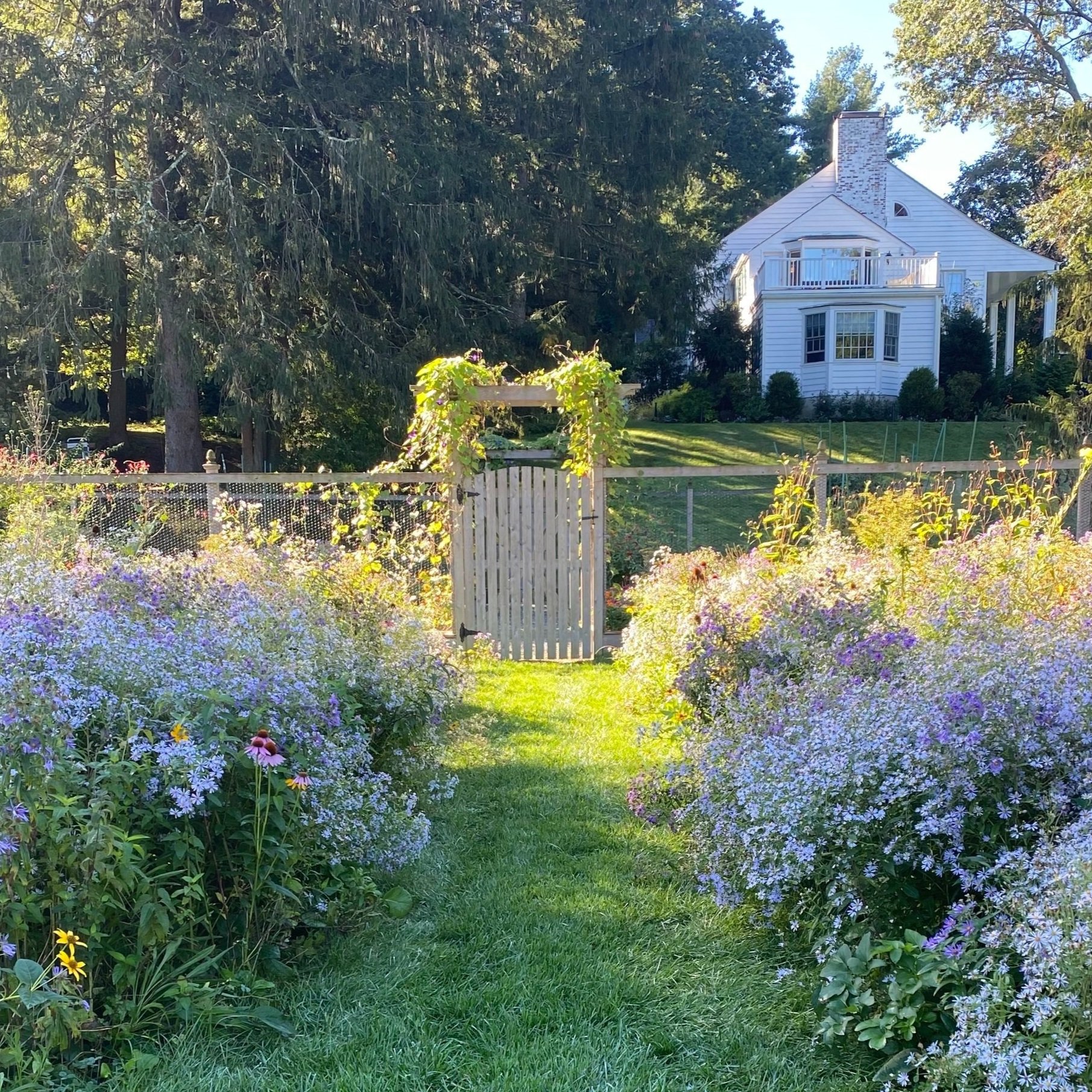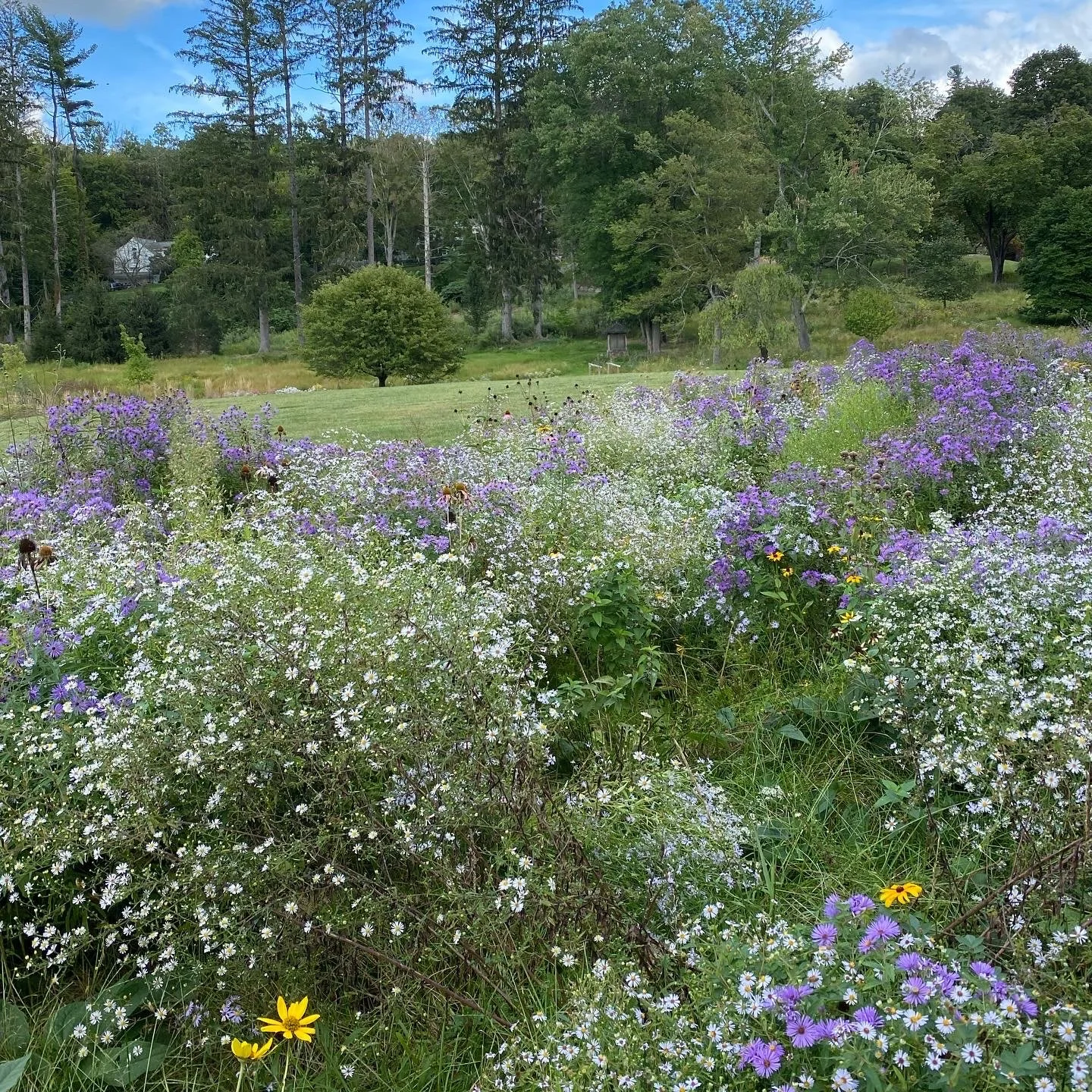Rewilding Lawns: Embracing Sustainability and Biodiversity in Westchester and Fairfield County, and Beyond!
In our time of environmental crisis, an increasing number of homeowners and businesses are moving away from traditional, water-intensive lawns and embracing sustainable native landscapes. This transition not only benefits the environment but also enhances the beauty and diversity of our surroundings.
Out with Lawns, In with Life
Letting go of a pristine and orderly lawn can be challenging. Since colonial America, lawns have symbolized wealth and abundance. Today, lawns cover an astonishing 63,000 square miles, nearly the size of Texas. However, it's important to recognize that this widespread practice comes at a cost. The American lawn might be our worst invasive species.
Traditional lawn maintenance requires significant amounts of water, particularly in dry regions or during droughts. According to the Environmental Protection Agency (EPA), landscape irrigation accounts for almost one-third of all residential water use in the United States. This excessive water consumption strains local water supplies and exacerbates water scarcity issues. Additionally, most lawns rely on pesticides and herbicides that harm beneficial insects like bees and butterflies, crucial for pollination. The decline of these pollinators threatens not only natural ecosystems but also agricultural productivity.
Fortunately, America's love for lawns seems to be diminishing as lawmakers, businesses, and regular homeowners recognize the benefits of rewilding.
Biodiversity Conservation: Allowing your lawn to rewild creates a habitat for various insects, birds, and small animals. Native plants attract pollinators such as bees and butterflies, contributing to the preservation of crucial ecosystems.
Water Conservation: Rewilded lawns, with their deeper root systems, better absorb rainwater, reducing runoff and improving groundwater recharge. This helps mitigate flooding risks and enhances the overall health of local water bodies.
Carbon Sequestration: Rewilded lawns act as natural carbon sinks, capturing and storing carbon dioxide from the atmosphere. The diverse plant life promotes photosynthesis, reducing greenhouse gas emissions and combating climate change.
Lower Maintenance and Cost: Once established, rewilded lawns require less maintenance than traditional manicured lawns. This saves homeowners time, energy, and money on mowing, watering, and fertilizers.
Passive Rewilding
Transforming your lawn into a meadow doesn't require ripping it all up—it's a simpler process than you might think.
Stop Mowing: Gradually reduce the frequency and height of mowing until you completely stop. This allows wildflowers, native grasses, and other plants to grow and bloom. April and May are ideal months to begin this practice, as plants are waking up from winter, invasives are easy to spot, and nothing has gone to seed.
Weed Management: While you're no longer mowing, devote time to weeding and preventing invasive plant species like garlic mustard, mugwort, Canada thistle, barberry, multiflora rose, and tree of heaven from taking over. You can manually remove weeds or use environmentally friendly herbicides sparingly.
Native Plant Selection: Introduce native plants to enhance biodiversity and provide food and habitat for local wildlife. We regularly share plant suggestions on our Instagram and blog, and you can always reach out to us with questions about plant selection.
Monitoring Change
After you've started the rewilding process, it's fascinating to observe the changes unfolding—watching new plants and insects making a home in your former lawn. We've launched our very own Less Lawn More Life movement with iNaturalist, where Westchester and Fairfield homeowners come together to record and share their observations. It's a fun game that helps us appreciate the transformation taking place.
By transitioning away from traditional lawns and allowing our outdoor spaces to rewild, we can promote biodiversity conservation, water conservation, carbon sequestration, and lower maintenance costs. Rewilding not only creates habitats for various species but also helps mitigate flooding risks and contributes to the fight against climate change.
The process of rewilding is relatively straightforward, involving a gradual reduction in mowing frequency and height, weed management to prevent invasive species, and the strategic introduction of native plants. Monitoring the changes and documenting the new life flourishing in our rewilded spaces can be an exciting and educational experience. We invite you to take part in this movement, setting an example for your community and positively impacting our planet!



